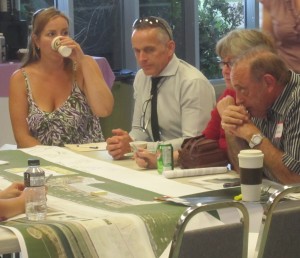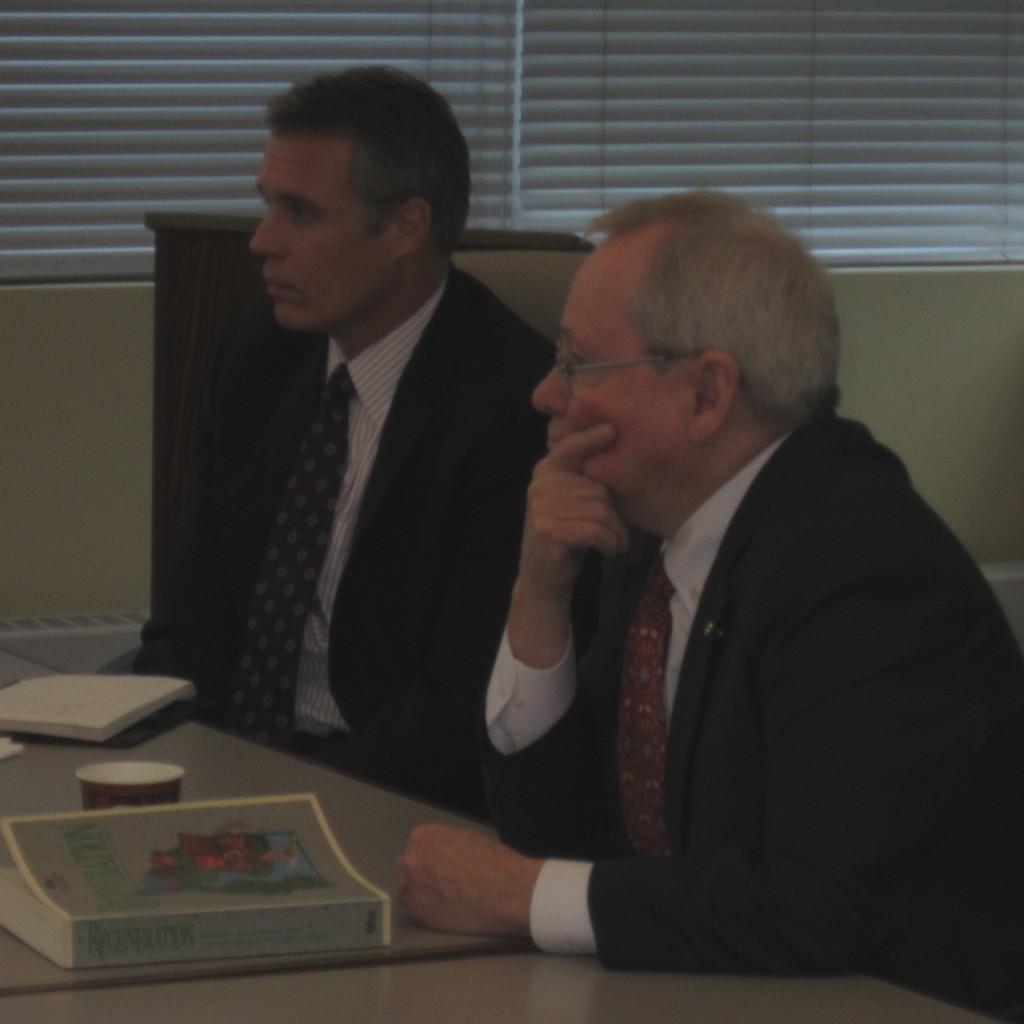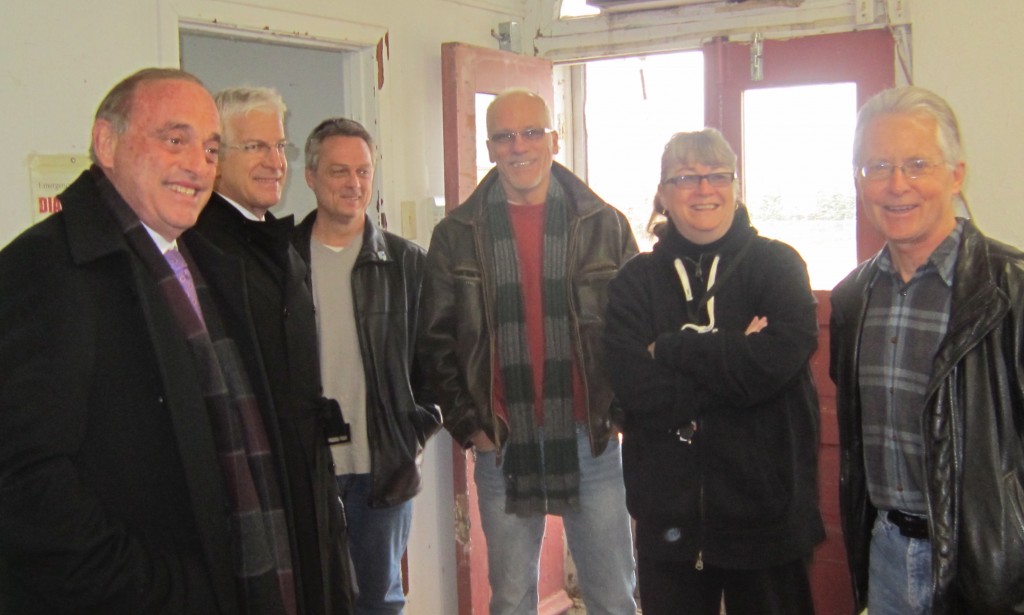BURLINGTON, ON October 1, 2012 It was a new Advisory Committee. Formed by a former, Mayor Cam Jackson who felt it could stifle some of the political heat he felt was going to be created during an upcoming municipal election from a very unhappy electorate over the delays with the building of a pier on the waterfront.
The project was an initiative that Mayor Rob MacIsaac was heavily involved in. He and Mayor Jackson didn’t exactly get along. The Waterfront Access and Protection Advisory Committee (WAPA) had political baggage before it held its first meeting.
Once formed, the city put out a call for citizens who wanted to serve on the Committee – there were to be two from each Ward with the Council member from Wards 1 and 2 plus the Mayor serving as ex-officio members. No other Advisory committee had this much political representation.
The committee was mandated to review and discuss all and any matters relevant to the creation of a cohesive vision of the future development of Burlington’s waterfront and adjacent waterfront lands.
Formally established in February of 2010, the members of the committee were appointed on May 3rd and met for the first time on May 4th. From May to August the Committee was chaired by Councillor Rick Goldring who was at that time the Councillor for Ward 5. On September 10th, 2010 the Committee elected Nicholas Leblovic as Chair. He was re-elected the following year but “elected” is a bit of a stretch. On both occasions Leblovic’s was the only name put forward. No one else apparently wanted the job.

Nicholas Leblovic, chair of the Waterfront Advisory Committee, far right, takes part in a Beachway design event. The Beachway was a priority matter for the advisory committee but they ran out of time – the city sunset the committee Leblovic chaired.
The task before this committee was daunting. There was no clear plan for the waterfront – one that the citizens understood and bought into – but there was a very real and significant opportunity to shape that part of the city; the committee had to figure out what was possible and take recommendations to city council.
No one on the committee had any experience at anything like this. Chair Leblovic brought an impressive legal background to the job. A graduate of McMaster University, then both the University of Toronto where he earned a law degree and the University of California at Berkeley, where he earned a Master’s degree in law, Leblovic went on to develop a career in which he is a recognized and repeatedly recommended practitioner in Asset/Equipment Financing and Leasing.
Leblovic has participated in various seminars dealing with corporate commercial topics and was an instructor in the Advanced Business Law Workshop, taught to third year law students at the Osgoode Hall Law School of York University.
It was very natural for him to take a seminar approach to figuring out how the committee should tackle its mandate. The group of 12 citizens had to first learn who they were and then decide what their priorities were going to be.
Leblovic brought a tight, disciplined approach to the task while others, who didn’t have the education he has, tended towards some pretty woolly thinking at times.
Everything Leblovic wrote read like a legal brief – that’s what he is – a lawyer. Was it what was needed? After less than two years of operation city council didn’t think so and decided WAPA would cease to exist. Then both the Mayor and Ward 2 Councillor Meed Ward announced they were going to form waterfront committees of their own. According to Meed Ward all the WAPA committee members, except for Leblovic, have said they would serve on the committee Meed Ward was forming. Meed Ward will chair the unofficial committee as a non-voting member.
Leblovic said he felt he had been blindsided by city council when it sunset the committee. It was certainly a shock to him and Council’s decision did show there was a significant disconnect between the city and the advisory committee.
Better committee management on the part of the city would have been useful. Leblovic wasn’t thanked by the city for the work he did and he did a lot of work. He brought to the forefront many of the issues that needed attention. The city just wasn’t listening as well as it might have. The only project that got out of the committee to Council where it was approved heartily, was the idea to turn the Pump House on Lakeshore Road into a coffee house/pub.
An issue that was also important if the lake’s edge is to be seen as something the public has a right to be able to walk along and appreciate, was the excellent work done by the Access sub-committee looking into how many places the public could actually get to the edge of the lake. It was an excellent report that the city has failed to act on effectively. Fighting this battle would have meant stepping on the toes of people who owned lakefront property – not something easily done in Burlington.
Leblovic’s practice was to create sub committees and basically let them get on with the job. The Access sub-committee did excellent yeoman’s work and the report did get to a council committee and on to staff where it got stalled. Leblovic, who has some experience with the municipal political process when he delegated in Burlington on development charge issues and when he delegated on matters related to his cottage in Tiny Township, was nevertheless unable to work with city staff to move this file along. Leblovic was never given the chance to argue for better citizen access to the lake’s edge; Burlington’s delegation process limited the amount of time he had.
Other than the Clerk assigned to an Advisory committee by the city, there is no one at city hall overseeing these committees. Leblovic had no one to go to for help and guidance. In his law firm, one of the top five in the country, Leblovic could walk down a hall and spend some time with a colleague learning what he had to do to move a file forward. He didn’t have that kind of access at city hall.
What also has to be remembered and appreciated is that WAPA met just once a month for half a day. Leblovic still practices law and is in Toronto much of his time. He wasn’t around Burlington during most days and able to drop in on people at city hall or meet for coffee to develop relationships.
Several of the members of the committee knew each other quite well, there was a familiarity between them that Leblovic didn’t share.
As Chair, along with his committee, WAPA decided it needed to get on a learning curve and get more background and a deeper understanding of the issues and their complexity. And the issues were complex. Everyone had ideas, thoughts, hopes and dreams for the waterfront but few were fully informed and they needed to learn as much as they could. Leblovic guided his committee into a learning curve that was steep and extensive. He learned as much, if not more than his committee members. A total of 29 presentations were made to the committee. They ranged from a great discussion with former Toronto Mayor David Crombie who suggested the committee hold a design competition (which the committee followed up on) to a presentation on the Randall reef, one on sewage treatment facilities as well as one on the War of 1812. In hindsight the range of presentations was too broad but don’t fault the chair for that – he was probing and finding his way through a subject that was central to what the city is – in a city that still isn’t sure what it wants to become.
Leblovic wanted his committee to hear from anyone who had something useful to say about the waterfront. City Hall wanted to see recommendations coming forward.

Leblovic arranged to have former Toronto Mayor David Crombie attend a WAPA committee meeting during which he sold them on the idea of holding a design competition. It was a good idea but the committee was never able to get it off the ground. Mayor Goldring took part in the meeting. He was one of three Council members on the WAPA
WAPA did come forward with plans for a design competition. While the ideas were not fully formed when Gary Scobie, spokesperson for the sub-committee, took them to a council committee – he did get enough of a positive response and encouragement from the council committee to take it away and come back with something that was more developed. Unfortunately, the WAPA committee member who was heading up the design competition moved and the committee didn’t have anyone who would pick it up and run with it. Also, they began to realize just how big a task they had taken on and realized as well that they were not up to it. As Scobie put it at the time – “we just lost interest in the idea once Sarah Banks was gone”. It was an opportunity lost. Leblovic was never really keen on the idea, partially because he realized just how much work it would entail and he probably suspected his committee was not going to be able to go the full ten rounds it would take.
While a little brittle on the personality side, Leblovic was very capable of reading his committee members and he knew what he had and didn’t have in the way of talent.
While learning as much as they could the committee had to set some priorities and they settled on:
Old Lakeshore Road /Mayrose Tycon development
Burloak Park usage
Water access and facilities
Brighton Beach.
The committee later revised this and settled on three priorities:
Water Access and Facilities
Burlington Beach/Spencer Smith Park
Old Lakeshore Road area and other shoreline development/acquisition.
Old Lakeshore Road area and the Mayrose-Tycon development. That project is now referred to as the Bridgewater development and some movement on that project, which goes back to 1985 has taken place. Did the WAPA have any impact on the developments? Other than informing the committee through the media WAPA had no impact. WAPA during its short life never issued press releases and never arranged to meet with the public. All their meetings were open to the public. Our Burlington was the only media to cover their meetings.
The language used in the report WAPA made to the Community Development Committee represents the experience and background of the chair who authored all of the reports. There are “hereto’s” and “aforesaids” sprinkled throughout the reports Leblovic wrote.
Leblovic is a lawyer trained to advise clients and advocate their interests often to other lawyers and courts. But communicating effectively to the public and politicians is another skill completely. There appeared to be no clear understanding of how best to communicate what WAPA was doing with a wider public. Neither the public nor city hall seemed to get a clear picture of what was being done. Leblovic could have used some help on the communicating side. City staff eventually gave up on the committee.
What WAPA was doing was an attempt to create a framework within which the development of the Old Lakeshore could take place. Leblovic is not a development lawyer but he understands the principles and knew that his committee needed to know more about who all the players were and what role the city could and could not play in getting something real happening in Old Lakeshore Road part of the city . Leblovic felt this could only happen if there was a disciplined approach to learning who owned what and then think through what might be possible.

Jeff Martin, centre, was a very passionate advocate on the Pump House. Gary Scobie on the right had hoped the design competition would actually happen – he certainly tried hard enough. Nicholas Leblovic, chair of WAPA is on the left.
Pump House: In time the building just might become a place where people can park their bikes and slip in for a sandwich and a glass of wine along with some of that over-priced pastry they all seem to sell. Getting this through the committee and into the hands of a council member who got it approved – was not a simple task. But it got done and it got done while Nicholas Leblovic was chair of the committee.
Public access to the lakes edge. The WAPA sub-committee that undertook this task, under the guidance of the chair brought to light facts few people knew. It was superb work that would not have been done were the WAPA committee not in place.
Nicholas Leblovic didn’t fail in his efforts – he just ran out of time and the city ran out of patience and for that the city has to accept much of the blame and responsibility. Leblovic brought in speaker after speaker. He managed to get former Mayor of Toronto David Crombie to speak and heard some of the best advice the committee would get. Crombie urged the committee to hold a design competition and put some “oddballs” on it and use the “bully pulpit” they have to promote their ideas. That called for a level of communication skills this committee just didn’t have.
Nicholas Leblovic is not a bully pulpit kind of guy. He deals in certainties; no surprises please. He deals in contracts where everything is set out and fully understood. That is not the world of municipal politics.
Do we fault Leblovic for what he wasn’t? We should be celebrating Nicholas Leblovic for what he was, the guy who took on the job, for whatever reason. His city failed to work with him and help him with the areas he wasn’t strong in. Nicholas is not a “superman”. He is just a citizen who wanted to participate in the process and thought he had something to contribute.
Was Our Burlington too hard on Nicholas Leblovic? He certainly thinks we were. Our intention was never to do any harm; we were at the meetings to report and explain what was being done for the citizens of the city. When a reporter writes something about a person that the person doesn’t like – some animosity builds up. The job is to write what you see and not do “fluff” pieces that make a person happy.
We were supporters of WAPA and big fans of the design competition idea. It is unfortunate that the city’s planning department chose not to step forward and provide some of the support needed. Burlington would have been well served had a design competition taken place,
We thought the idea of turning the Pump House on Lakeshore Road into a pub was a great idea and applauded the committee for bringing this one forward.
Getting better public access to the lake’s edge is important and another project one of the WAPA sub committees did great work on. We thought the chair should have continually prodded the city to get moving on this one. That didn’t happen.
The Shape Burlington report said Burlington suffered from an information deficit. Our Burlington has played a significant role in improving what citizens learn about what is being done for them with their money. That is not always a pleasant process.
Was serving his city a pleasant experience for Nicholas Leblovic? Probably not. Does he deserve a strong vote of thanks for taking on the almost impossible task of putting forward ideas and approaches for the creation of a waterfront that serves the city Leblovic has lived in much of his life? Most certainly.


















